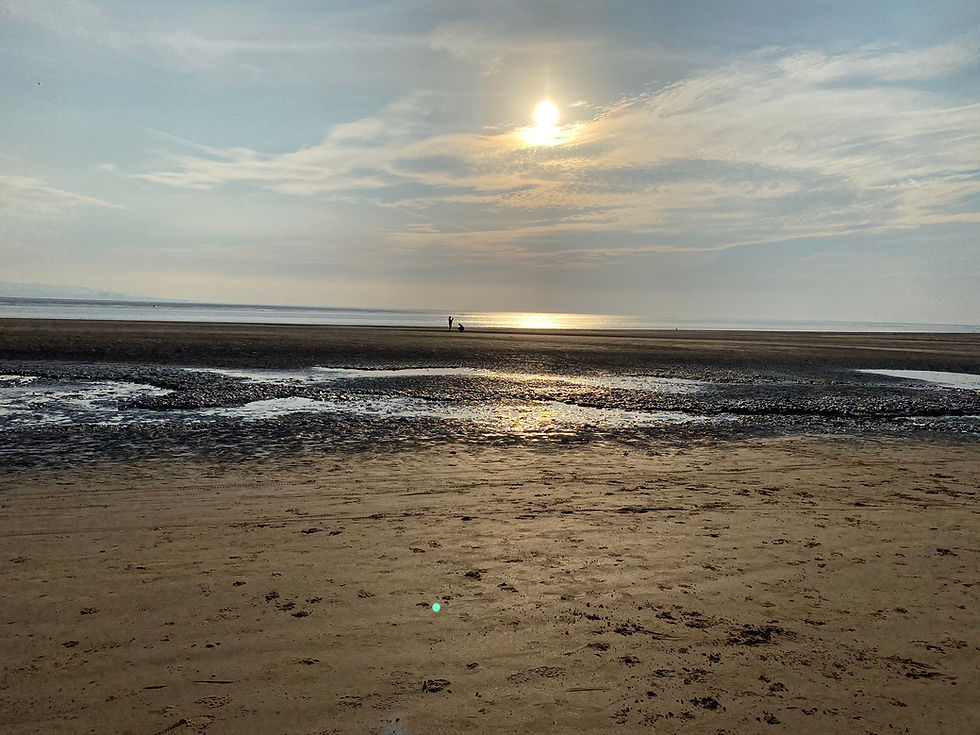The Nuclear Threat to Fish
- Lipmann Walton & Co Ltd

- Jun 24, 2021
- 3 min read
Updated: Apr 7, 2023
In November 1961 my uncle Eric Austen (1922-1999), who was co-creator of the Peace Sign with Gerald Holtom, wrote to his daughter's school:-
'I should be grateful if you would allow my daughter Gea, not to have her milk allowance at school, I gather that the radio-active fall-out in milk has now reached what is considered the danger level (if it stays that way for a year). For this reason, I do not wish my child to imbibe her third of a pint. Yours faithfully, E Austen'.
It is sometimes forgotten that in the late 1950s the prevailing angst of his generation was nuclear annihilation just as today ours is environmental. At the time Eric was writing, it was four years after the Windscale nuclear plant in Cumberland had sprung a leak, and long before it was re-branded Sellafield.

Post war global Britain in its 1950s incarnation was trying to keep up with the Americans and develop its own nuclear deterrent. Without parliamentary approval the since beatified Attlee Government had spent £100m in old money on a secret nuclear weapons plan to develop our own H Bomb. It was one of a number of reasons why peace activists' fears were not far from the mark as the world appeared to drift inexorably towards a nuclear World War III.
By 1973, even an old war horse such as Earl Mountbatten, had nuclear misgivings. On May 11th 1979, in a speech given in Strasbourg, he opened with the words, 'Do the frightening facts about the arms race, which show that we are rushing headlong towards a precipice, make any of those responsible for this disastrous course pull themselves together and reach for the brakes?'
The UK public had come to learn that investment in nuclear power was primarily for the creation of weapons-grade plutonium and, only secondly, a rather clever way to heat people's homes. The public, rightly or wrongly, distrusted nuclear and subsequent disasters such as Chernobyl (1986) and Fukushima (2011) did little to alter this.
Today, in 2021, our greatest fear is not so much nuclear annihilation but planetary and species extinction. For this reason, great scientists, such as James Lovelock, (author of Gaia theory), believe 'new nuclear' is the fastest way to reduce carbon emissions; and some of the public are now ready to accept the argument. What's not to like about 3.26 gigawatts of constant non-carbon emitting power for sixty years when you want to put the kettle on?
Britain has been pragmatic. Unlike Germany, whose knee-jerk reaction in 2011 was the cancellation of nuclear output by 2022 (now burning carbon-polluting brown coal instead) Britain aims to build Hinkley Point C by 2026 (see BBC TV's programme Building Britain's Biggest Nuclear Power Station).
Enter EDF and the European Pressurised Water Reactor (EPR). The key word here is 'water'. It will take billions of gallons of H2O to cool the reactor and it's all planned to be siphoned through inlet tunnels under Bridgwater Bay, bringing water from the Severn Estuary.
But while the BBC programme paints a picture of happy hard-hatted engineers pouring 9000 metric tons of concrete for the reactor base, and focuses on the removal of lamp posts for the delivery of heavy tunnelling equipment along Somerset lanes, what, you might ask, are the real costs?
One of the greatest, and least publicised, is to the fish. Nuclear Plants that create steam to turn turbines need cooling. So it is that the fate of a billion fish - including rare Allis and Twaite Shads, Atlantic salmon, European eel, and many other species are threatened over the life of the plant.
While BBCs programme focused on the feats of the boring equipment tunnelling towards the Severn Estuary few voices have been heard about the cost to this special estuary environment and almost no focus on the valiant attempt to use technology to scare away the fish from the inlets. In a hardly discussed public inquiry to be decided by Secretary of State for Environment, Food and Rural Affairs, former UKIP member, now Conservative MP, George Eustice, will hear representations from the Environment Agency representing Somerset Wildlife Trust, Blue Marine Fund, Burnham Boats, Bristol Channel Sea Anglers and tens of other submissions.
In a project that is presently thought to cost £26 bln the acoustic deterrence equipment might cost £5mln.
'What's that got to do with the price of fish?' you might ask.
By Anthony Lipmann as Published on The Oldie Blog 23.06.21
www.theoldie.uk/blog




Comments